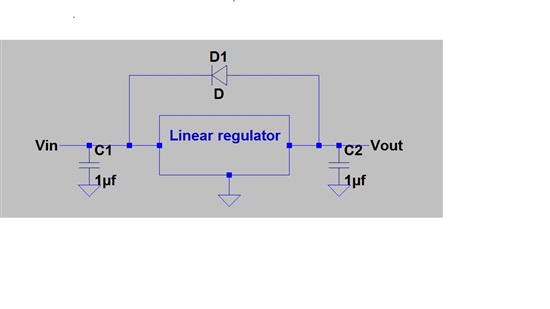I have a question to ask of your design or application engineers.
Is there any reason for putting a diode across a linear regulator as shown?
We have a lessons learned case where it says this is required on all linear regulators. What it the opinion of TI on this recommendation. It is said that if the output would stay up longer than the input damage could occur.
I would really like TI’s opinion on this, I have never seen an app note recommending this.
Ryck Blanchard
Uninson Industries (GE Aviation)
Ryck.blanchard@unisonindustries.com

